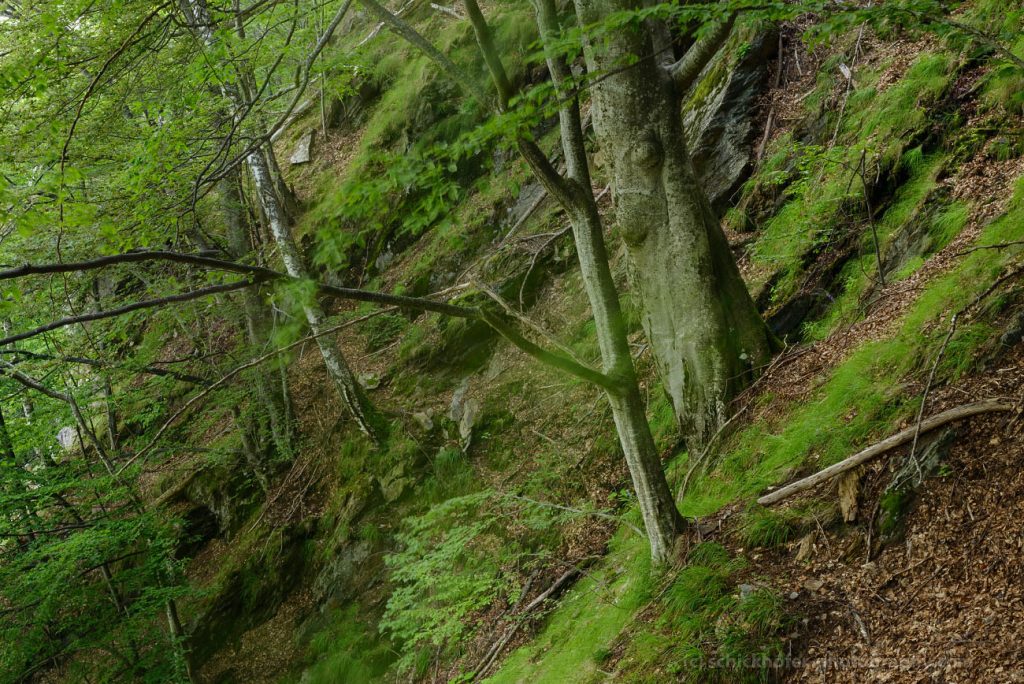Romanian NGO calls for better protection of Europe’s virgin forest „hot spot“ in Făgăraș Mountain Natura 2000 site
Radolfzell. There are only a few places left in Europe where wilderness in its original form still can be found: Mountains and valleys without roads, even no trails and primary forests. Făgăraș is one of the last strongholds of European large wilderness and it hosts probably the wildest valley in the heart of Europe: Boia Mică, a steep, remote valley with a large, untouched and almost inaccessible virgin forest.
The Romanian NGO Agent Green warns today that also this paradise could be destroyed rapidly. In the past years many primeval forests in the Făgăraș Mountains have been logged and thus are destroyed forever. Some clearcuts in the Natura 2000 site covering most parts of the Făgăraș Mountains spread over hundreds of hectares. The German EuroNatur Foundation and Agent Green call on the Romanian Government to halt logging of virgin forests in the Făgăraș Mountains and to establish a National Park, meeting the international IUCN criteria. Especially the outstanding Boia Mică valley deserves immediate action to prevent destruction.
“Boia Mică is located in the Natura 2000 site Făgăraș Mountains. According to European legislation it is already protected. But apparently the designation as Natura 2000 is not preventing logging as we have seen many negative examples and clear violation of the provisions of Natura 2000. The Romanian authorities urgently need to enforce nature protection in Făgăraș Mountains and in all Natura 2000 sites,” demands Gabriel Schwaderer, Executive Director of EuroNatur.
The upper part of Boia Mică is completely untouched, steep slopes and canyons prevented it so far from logging and hydro dam plans. However exploitation plans are already there. „Boia Mică is one of Europe’s prime wilderness places. This is definitely one of the largest and least accessible old-growth forests in Europe. I have seen most of Europe’s wild forests,“ photographer and book author Matthias Schickhofer says, „it is comparable to the most valuable sites such as Biogradska Gora national park (Montenegro), Perucica virgin forest ( Bosnia and Herzegowina) or Polands Biolowieza forest. It would be a disaster for whole Europe, if it would be destroyed.“
Martin Mikolas, a Slovak forest scientist working at the Department of Forest Ecology at University of Life Sciences in Prague, is doing research in Boia Mica since many years and says: „We found there probably the oldest beech tree in Romania, with more than 500 years! We measured 480 tree rings, but the tree was cored in height of one meter, and we did not get the centre of the tree because of rot. So the real age could be between 500-520 years. All together, we had 15 trees older than 400 years on 14 plots in Boia Mică, what is an incredible result. Our plots have been selected randomly.“
In July 2016 Martin Mikolas, Matthias Schickhofer and Romanian forest experts also visited other virgin forests sites in Fagaras such as Ucea Mare, Arpaselu and Strambei valley. The scientists confirm that all those forests are untouched and comply fully with the Romanian legal criteria for virgin forest protection. However, no one of them is officially registered as virgin forest and thus not protected properly according to the Romanian forest law yet. Logging roads have already reached their borders. Agent Green and EuroNatur urge the Romanian Government to take immediate action to save those wild places of European significance.

